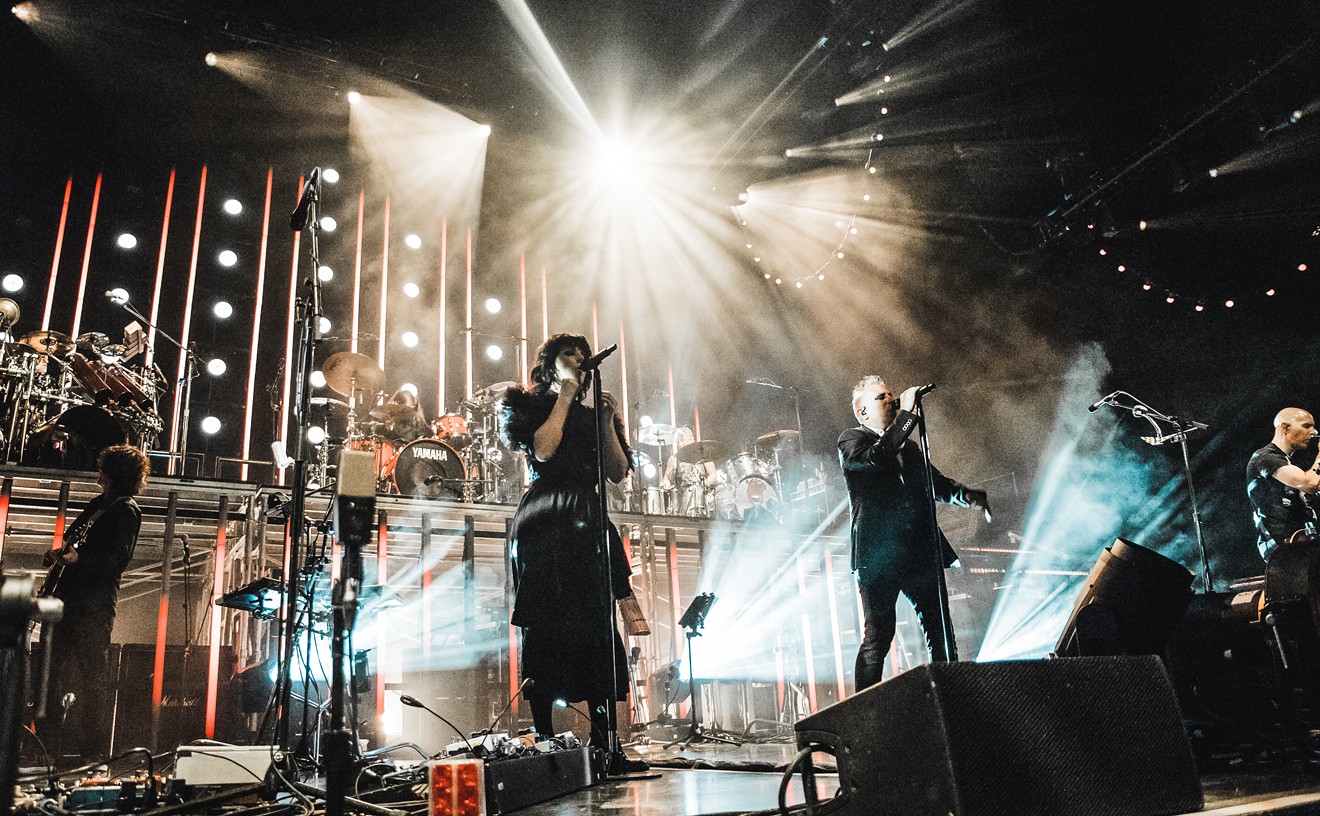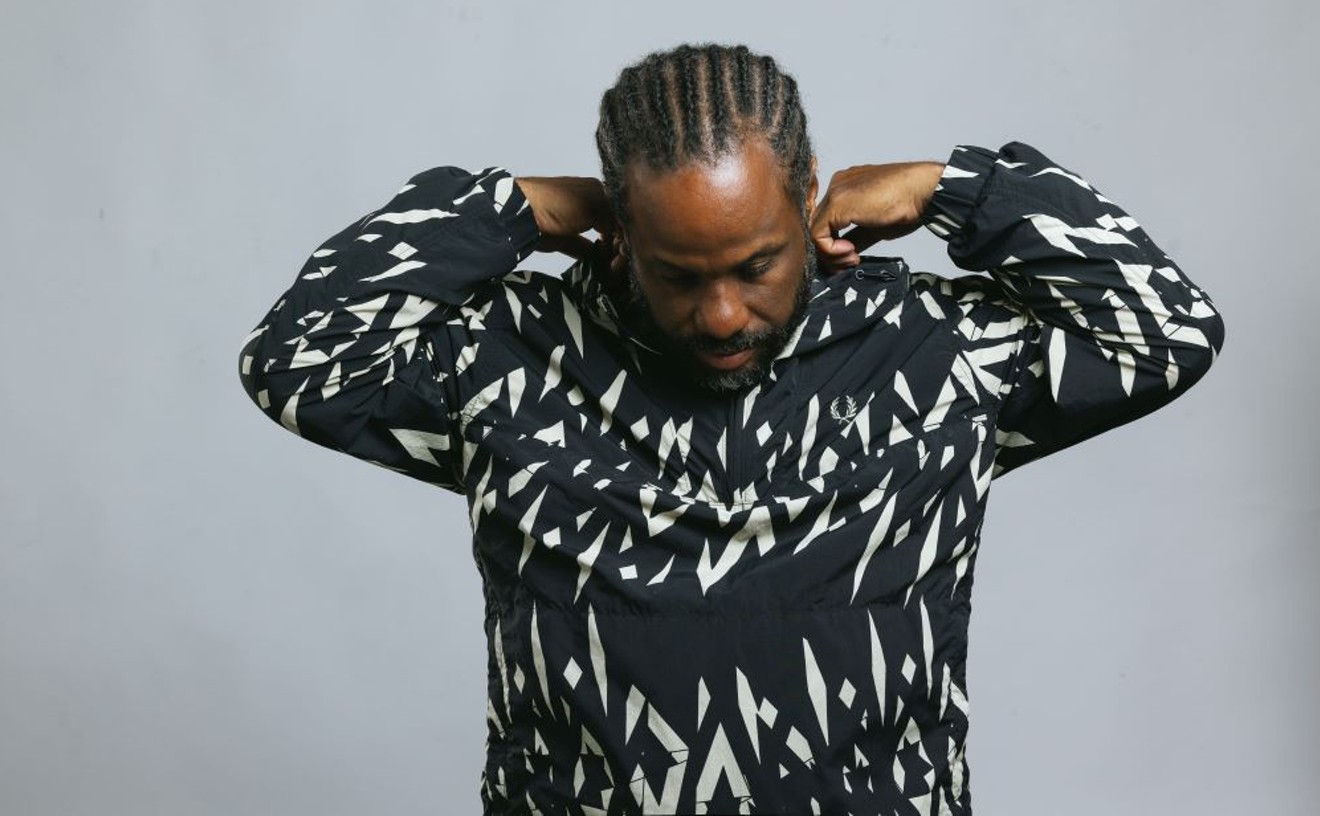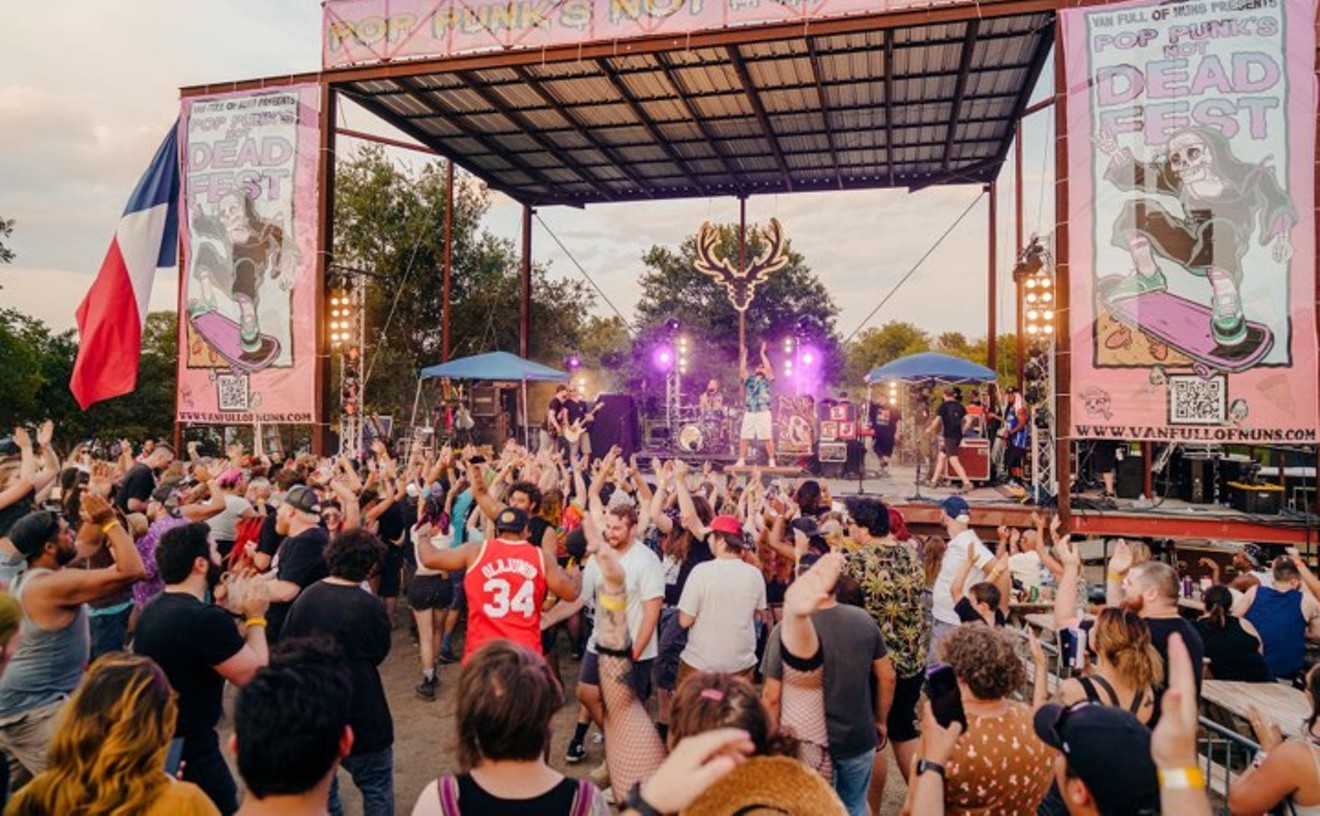Shane Culp is concerned because he is wearing black socks. So is Aaron Graves. That puts the sock ratio of Mission Giant at five white, two black. "You guys are out," says a band member who calls himself simply M. They take their clothes seriously in this band. Today they're in their scout uniforms: black short-sleeved button-up shirts with a gray loop on each shoulder, gray pants and white belts with brushed brass buckles. Yellow bandannas are scattered on tables and desks instead of tied neatly at the necks as usual. They're even wearing the same shoes.
The scout look, soon to be accented with badges and awards, is the latest in Mission Giant fashion. They've worn suits made from bubble wrap, chefs hats, Colonel Sanders-like "Southern gentleman" white suits with bow ties, jackets cut from mosquito netting (for an outdoor show "because we're fragile," Jermy Johnson says), flight suits paired with dress shirts and ties (for a statement on work wear versus formal wear, blue collar versus black tie) and, for the CD release shows for 2003's Brotherhood of the Plug, knights tunics with drawings of two three-pronged electric outlets where a crest's design would normally be. "We want to give people shows," M says. "We don't want to show up and play in T-shirts and jeans and 'rock out.'"
Can you tell they were visual arts students?
Mission Giant formed in Denton in 1996 in the arts community surrounding the University of North Texas and the Good/Bad Art Collective. M and Gavin DeCuir were bandmates in Prismatic Otter. One day the drummer split; they still had their synthesizers, so they kept making music. Culp and Graves joined soon after, followed by Corbett Sparks (The Dooms U.K.'s DJ Geeky C). Johnson and Josh Eager came after Brotherhood. And then there were seven. "It all seems very organic and not very formal in terms of how people ended up in the band," Sparks says. "It was like, 'Hey, you're doing something that's similar to what we're interested in doing. Come and do something with us.' And then it just ends up that those people never go away."
Their background in and love for the visual arts affects every aspect of Mission Giant, from their matching outfits to their stage-consuming live shows that often include props, lights or projections to the subtle, clever and sometimes ridiculous electronic music they make by combining experimental, occasionally difficult elements with traditional pop harmonies and hooks. The adage that any band that uses light shows, costumes and other "gimmicks" must not make music that's good enough to stand on its own doesn't apply here. Brotherhood of the Plug tempers the electronic experimentation with pop structures, from the melodic sample-heavy album opener "Potential for Future Dynamics" to the instrumental soundtrack-like "The Last Minstrel" to a dispassionate New Wave cover of Ratt's "You're in Love" and "Life," which shows why the band often gets compared to Devo, something the group's had to make peace with over the years. This fight between making arty noise and making dance-worthy music is evident on their "proper" releases on Uncle Buzz Records and the dozens of albums they've self-released under the name Fellowshipwreck Music.
Despite upholding the highfalutin ideals of art, the members of Mission Giant have fun--onstage, in the studio, in their weekly band meetings. They're the first to mock their costumes and marvel at the physical labor and time that often go into their preparations for live shows. They joke about shows where they've caused power outages and bewildered soundmen. It's no wonder, since their setup includes four to seven microphones and an average of 30 instruments--from the more traditional bass guitar, turntables and keyboards to laptops, Speak & Spell toys and GameBoys. "We like to have fun together and joke around," DeCuir says. "And I think that comes across onstage. That's why we play toys. We're not too proud to have fun."
For some reason Mission Giant's blend of art and rock music seems to be appreciated more in Austin than in North Texas. "We had this CD release party at Hailey's, and we built these turrets for inside of Hailey's--these wooden castle turrets--and we had them lit from within, and we had these banners and all this stuff, and we had this wall behind us. I think 30 people showed up," M says. "But then we'll play some completely random show in Austin and not have any plan for it other than like, 'Let's shine these 1,000-watt lights in their faces,' and they'll eat it up. There will be hundreds of people there." Sure, it's disappointing, but for them the act of creation is as important as the reception. "Whether they get it or not, it's satisfying for us because we took an extra step more so than some of the other bands we've seen," Culp says.
But perhaps absence will make fans grow fonder--or at least more willing to come out to a show. Friday's performance at Hailey's will be Mission Giant's first D-FW show in six months. The band devoted much of that time to prepare for two very elaborate shows: a performance for the nomadic Austin Museum of Digital Art and one in Galveston, which was a rare opportunity for the band to have almost complete control over the evening. "A band is never given the option to create a show," Eager says. "They're usually part of a venue's act. They're one part of a show. This was an opportunity to create an experience like in a gallery." They've also been busy composing soundtrack pieces for Hunt for Grievous, an online video game for promotion for Skittles and Star Wars Episode III developed by Blockdot where Culp is the lead software engineer. He often calls on his bandmates to create music for his projects; they've done half a dozen so far. But they all credit Johnson for this one. He did a lot of the work, even learning a new software program that will potentially add more orchestration to the band's sound.
People often focus on Mission Giant's live shows: the costumes, set pieces and video projections. And who wouldn't talk about a band in monochromatic Boy Scout uniforms playing jacked-and-miked, brightly colored kids plastic guitars? But to them the music is just as important even if it wasn't their first medium. "We try to give equal attention to the visual as well as the audio aspects," DeCuir says. Still, it's nice when hours of building castle turrets or filming videos to project in front of them gets noticed. "It is about the music. Sometimes you'll get a payoff, somebody coming up and saying how great everything looked," M says. Graves counters: "Or how they liked our white satin capes."










